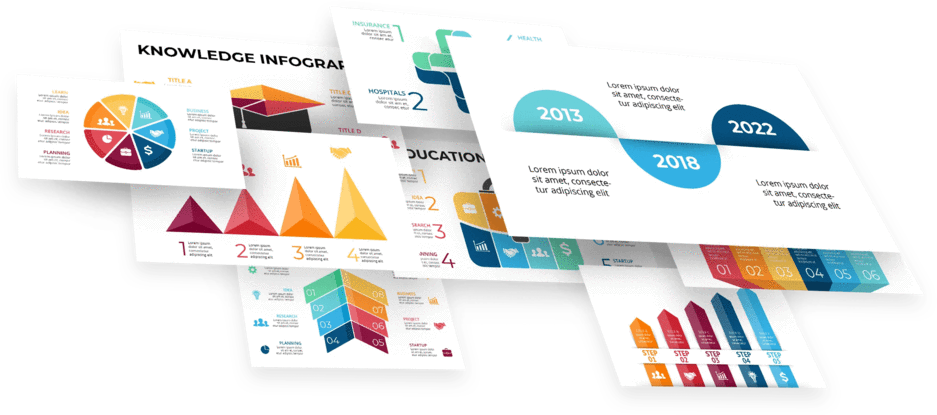Stretch Goals: What They Are & How To Set Them
Oct 14, 2022
Have you consistently smashed all your goals and are looking for something more challenging? It's time to set a stretch goal.
Whether an individual or business leader, you can use stretch goals to achieve seemingly impossible objectives.
We will take you through all the essential details of stretch goals, including how to set them, their benefits, and examples. You can also download s stretch goal template at the end of the article.
Stretch Goals Definition.
A stretch goal is a demanding objective meant to push an individual or team to a new level of performance. It is intentionally set to be challenging to motivate people and avoid complacency.
However, stretch goals aren't just difficult to achieve. They also require novelty, a fresh way of thinking and working. When pursuing a stretch goal, you must take a brand-new approach.
Interestingly, you don't have to achieve a stretch goal. The idea is to test your capability or that of your team. It will be exceptional to achieve your stretch goals. However, a stretch goal will motivate your team members and provide new information even if they fall short.
Pursuing a stretch goal is like reaching for the stars. Even if you don't get there, you get to fly.
The Stretch Goal Paradox.
According to the Harvard Business Review, an organization must consider two factors before pursuing a stretch goal. These factors include its recent performance and available resources.
Stretch goals are best suited to teams performing well and achieving their objectives. Such groups have the momentum and confidence to take up something more challenging.
On the other hand, a stretch goal will be asking too much of a struggling team. SMART goals are much better in such situations because more achievable objectives provide more motivation and less strain.
Additionally, companies with surplus resources are better positioned to get the best value from stretch goals. The availability of excess resources such as tools, money, workforce, skill, and expertise allows them to pursue ambitious stretch goals without worrying about potential setbacks.
How To Set Stretch Goals.

As you already know, stretch targets are challenging. However, you can ease your task by following these steps:
Brainstorm.
The first step in stretch goal setting is to brainstorm with your team. Ask questions that can help open a new level of performance. What immediate action can you take in your industry? How can you bring your customers extra value? What's the best goal you can achieve? What can stretch the capacity of each team member?
Consider Your Resources.
Before you work towards your stretch goal, you must consider the available resources. Do you have sufficient resources to undertake such a goal? How will a failure affect your business?
Set It.
It is time to set your stretch goal. Assign tasks to each member of your team to get everyone involved. You should also develop an action plan and a timeline.
Track It.
You can keep your team motivated by tracking your stretch goal. Your team members will be more inspired when they can see their progress and celebrate milestones. You can track stretch goals with key performance indicators (KPIs).
Assess Your Progress.
As we mentioned, your primary aim shouldn't be to achieve stretch goals. However, you should assess your progress toward your target after a particular period. You will have a lot to learn regardless of the outcome.
Check out the best project management templates.
Stretch Goal Examples.
There are different types of stretch goals. We will explain some of them below:
Marketing Stretch Goal.
A marketing team can take up a stretch goal of boosting its conversion rate from 25% to 60%.
Small Business Stretch Goal.
If you are a small business owner, you can set a stretch goal of owning the highest number of physical stores in your region in four years.
Personal Stretch Goal.
As a beginner, you can set an ambitious stretch goal of learning two programming languages in a year.

Advantages of Stretch Goals.
You can enjoy several benefits from pursuing challenging and ambitious stretch goals. Let's look at how stretch goals can improve your team:
- They prevent complacency
- They enhance commitment
- They inspire team members
- They encourage innovation
- They boost productivity
- You may end up achieving ambitious goals you never imagined
These marketing infographics never fail!
Disadvantages of Stretch Goals.
Stretch goals aren't without their downsides. Let's look at some of them:
- Increased chances of burnout
- Excessive risk-taking
- You may lose sight of the essential objectives, i.e., tunnel vision.
Download a Stretch Goal Template.
If you feel your team has what it takes to accomplish stretch goals, you can get to work by downloading a presentation template from Simple Slides. It will simplify planning and help you communicate your ideas with your team.
Frequently Asked Questions:
How do you create a stretch goal?
You can develop stretch goals by setting targets beyond your current performance levels.
What is the difference between SMART and stretch goals?
The significant difference between stretch and SMART goals is that you set a SMART goal to achieve them. Meanwhile, you put a stretch goal as a challenge.
What if I fail to achieve stretch goals?
Stretch goals differ from common goals because they are primarily meant to be challenging. Effort and motivation are more vital.
Related Articles:
Get A Free Sample of Our Award-Winning PowerPoint Templates + University
Get A Free Sample of Our Award-Winning PowerPoint Templates + University
Join our mailing list to receive the latest news and updates from our team.
Don't worry, your information will not be shared.
We hate SPAM. We will never sell your information, for any reason.





